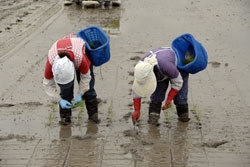 This is the way people have transplanted rice into paddies for who knows how long. That’s changed a lot now that machinery has been built to make the task much easier and faster.
This is the way people have transplanted rice into paddies for who knows how long. That’s changed a lot now that machinery has been built to make the task much easier and faster.
When I interviewed one of the officials with the National Agriculture and Food Research Organization he asked me why man invented machines. I was stumped so he answered for me. “To do the work for us.” Right. And when it comes to this type of work I can see why you’d want a machine. The mud in the field is necessary but looked difficult to walk in.
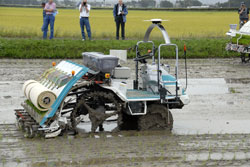 We got to watch a demonstration of a machine with a man at the wheel but the main attraction was a prototype of a new GPS-guided planter. I’ll have more on that in another post.
We got to watch a demonstration of a machine with a man at the wheel but the main attraction was a prototype of a new GPS-guided planter. I’ll have more on that in another post.
One thing is obvious and that is that what we call precision ag is making it’s way around the world with applications in all types of farming. This stop at the Furukawa Agricultural Research Station was the highlight of our long travel day.



 We moved on from Tokyo to Sendai via Furukawa on Wednesday. Moving a couple hundred people through a crowded train station is not an easy task. The Japanese journalists helped out though by stationing themselves at various places with signs pointing us to the right track.
We moved on from Tokyo to Sendai via Furukawa on Wednesday. Moving a couple hundred people through a crowded train station is not an easy task. The Japanese journalists helped out though by stationing themselves at various places with signs pointing us to the right track.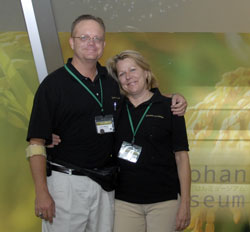 To help demonstrate how import rice is to the Japanese culture we visited the
To help demonstrate how import rice is to the Japanese culture we visited the 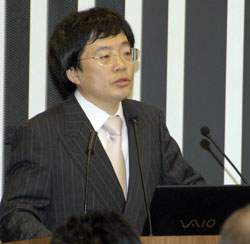 When you attend these IFAJ conventions it’s interesting to hear from the policy leaders on the program. I’ve found that it’s very normal to have someone on the program to defend policy practices, especially when it comes to foreign trade and the WTO.
When you attend these IFAJ conventions it’s interesting to hear from the policy leaders on the program. I’ve found that it’s very normal to have someone on the program to defend policy practices, especially when it comes to foreign trade and the WTO. Here in Japan the turmoil at their Ministry of Agriculture precluded our being able to meet with their Minister. Back home it looks like we’ve got a little turnover going on too. I just learned that Mike Johanns has resigned as our Ag Secretary. The picture of him here is from the recent Farm Progress Show. I’ve always been a big fan of Mr. Johanns since I first met him as Governor of Nebraska. I’m betting he’ll continue to be a political force in that state. President Bush has appointed Deputy Agriculture Secretary Charles Conner to take over as acting secretary.
Here in Japan the turmoil at their Ministry of Agriculture precluded our being able to meet with their Minister. Back home it looks like we’ve got a little turnover going on too. I just learned that Mike Johanns has resigned as our Ag Secretary. The picture of him here is from the recent Farm Progress Show. I’ve always been a big fan of Mr. Johanns since I first met him as Governor of Nebraska. I’m betting he’ll continue to be a political force in that state. President Bush has appointed Deputy Agriculture Secretary Charles Conner to take over as acting secretary.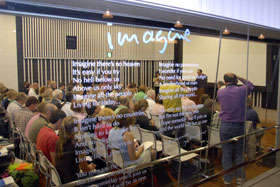 We started out a very long day of activities here at the IFAJ Congress with a sort of a press conference at the “Imagine” studio of the
We started out a very long day of activities here at the IFAJ Congress with a sort of a press conference at the “Imagine” studio of the 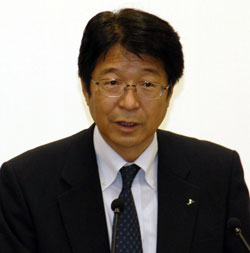 Anyway, we heard from several people including the director of agricultural policy for the Japanese Agricultural Cooperative system.
Anyway, we heard from several people including the director of agricultural policy for the Japanese Agricultural Cooperative system. 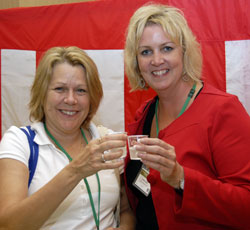 Have I mentioned sake yet? This is sake country and at one of our receptions in Tokyo I think we had at least 13 companies exhibiting with sake tasting galore.
Have I mentioned sake yet? This is sake country and at one of our receptions in Tokyo I think we had at least 13 companies exhibiting with sake tasting galore.